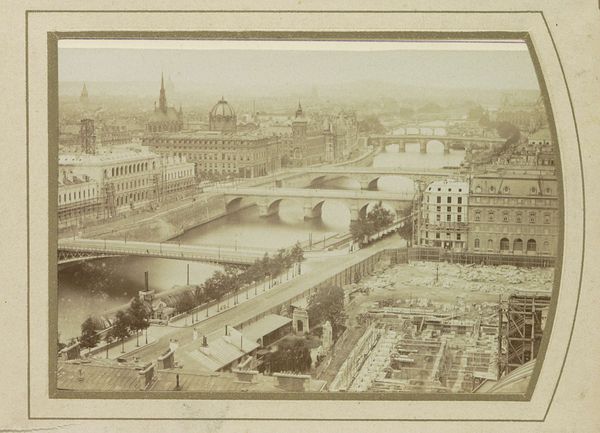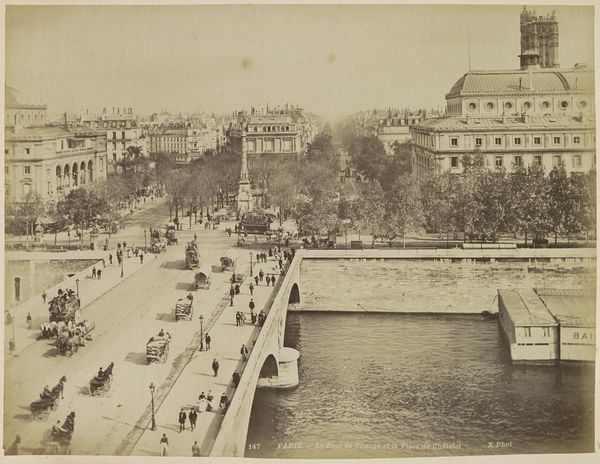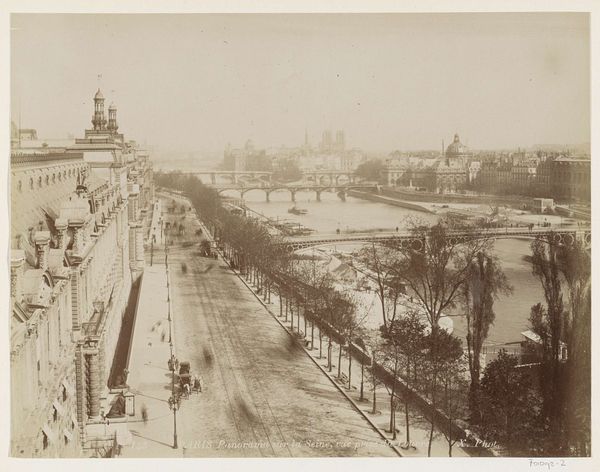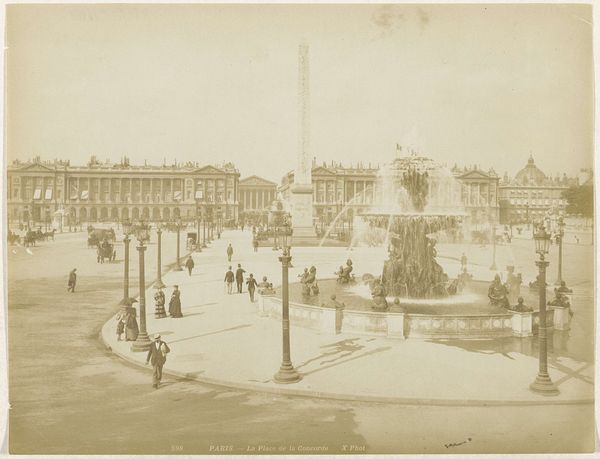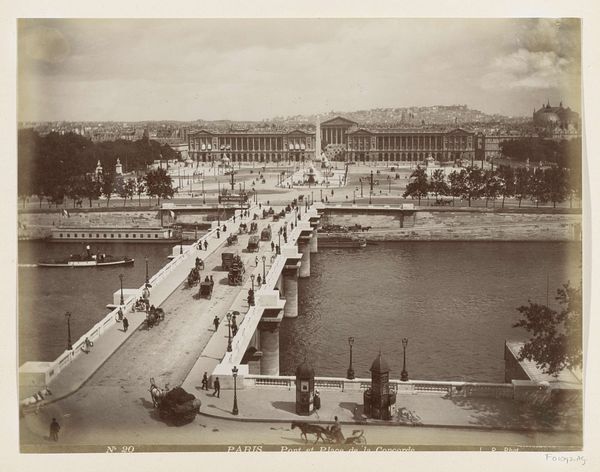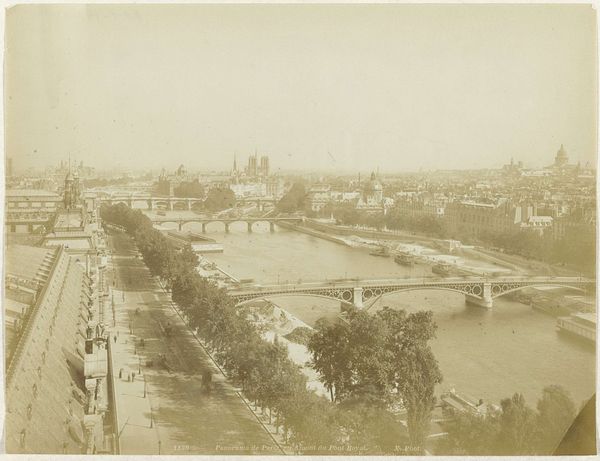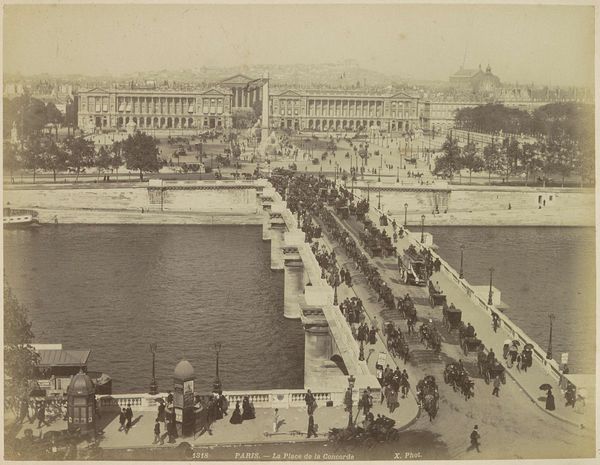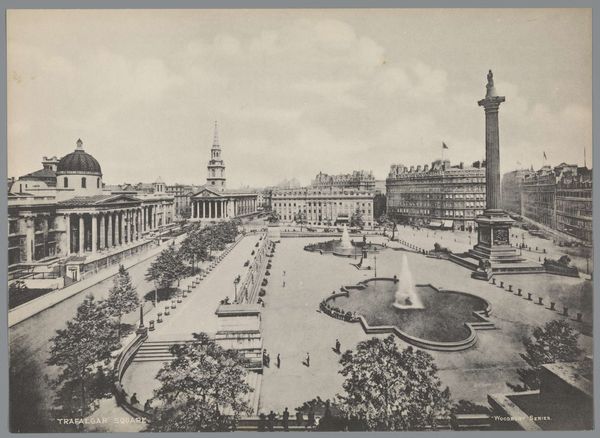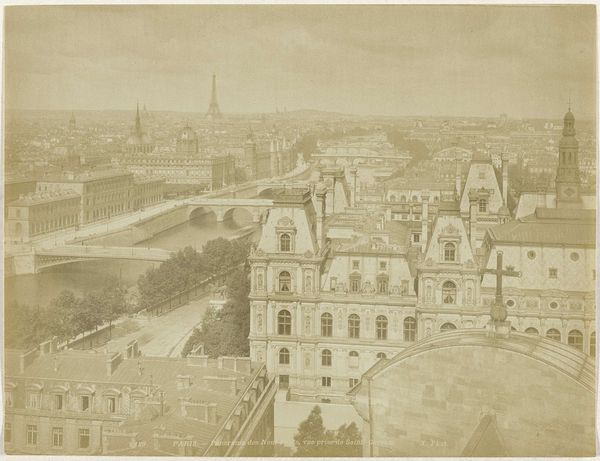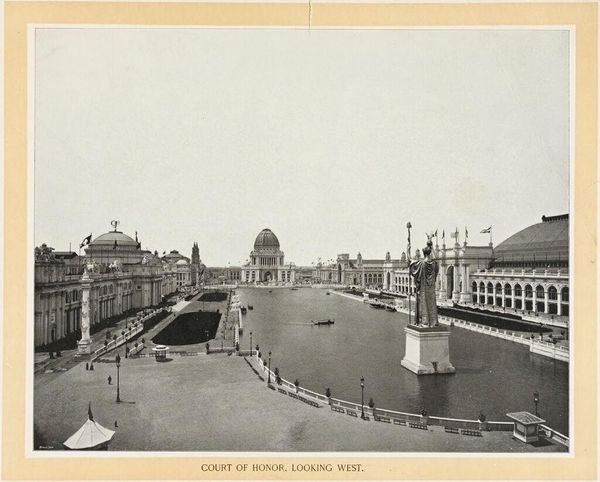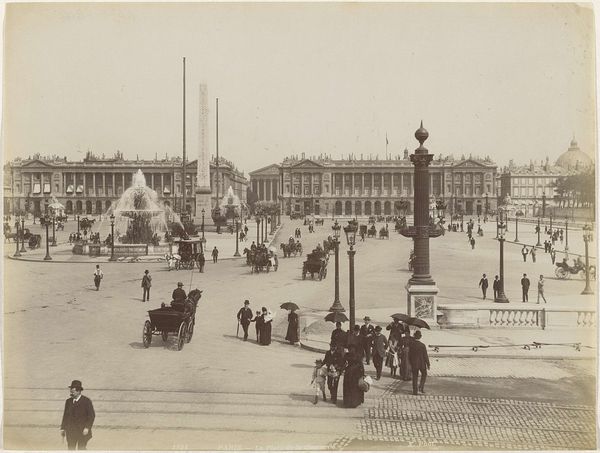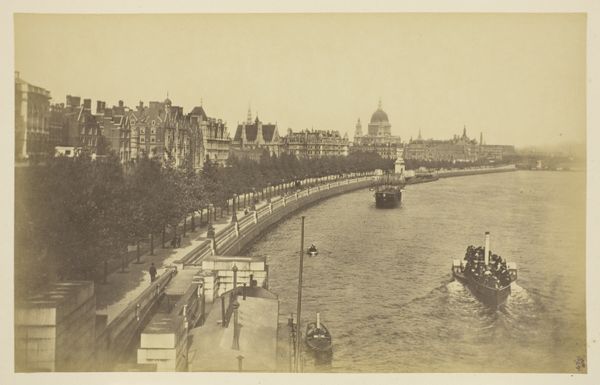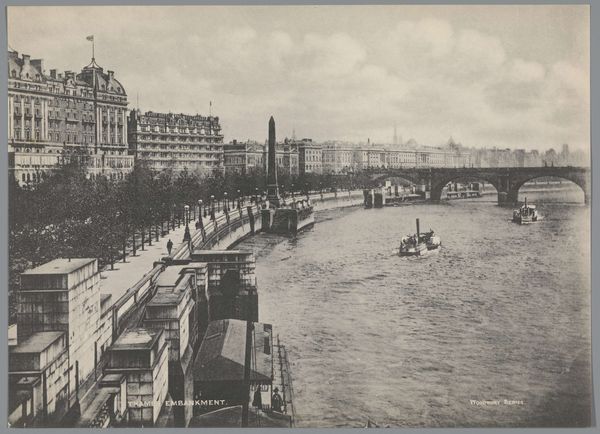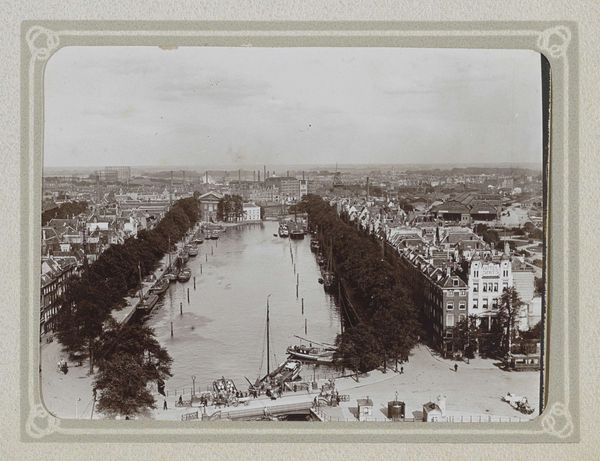
Dimensions: height 209 mm, width 273 mm
Copyright: Rijks Museum: Open Domain
Editor: Here we have an incredible photograph titled "Gezicht op de Pont de la Concorde over de Seine in Parijs," taken between 1887 and 1900 by X phot. The sepia tone gives it such a dreamy, distant feel. What strikes me is the composition, how the bridge just draws your eye right into the heart of Paris. What do you see in this piece? Curator: I am intrigued by the geometrical scaffolding provided by the bridge's linear structure, bisecting the Seine. Notice how the photographer utilizes aerial perspective, attenuating detail as the cityscape recedes into the background, which imbues the photograph with its depth and tonal unity. How do the shadows of the gas lamps relate to that geometry and depth? Editor: That's a good point. The soft shadows really accentuate the form, yet somehow create a visual barrier as well. The lines guide my eyes, but the fading contrasts hinder how far I see, don't you agree? Curator: Precisely. Furthermore, it highlights the play between absence and presence inherent in photography itself. The clarity of the bridge’s architecture contrasted against the softness of the Parisian skyline underscores the artifice inherent in representation, while pointing back to the photographer’s position as constructing a deliberate composition from raw optics. Editor: It is fascinating how analyzing these structures and photographic qualities changes the whole picture. Before I just saw an old photograph of Paris. Curator: Indeed. Examining these compositional elements deepens our understanding of the photographer’s aesthetic choices. We are prompted to consider his arrangement of space and, fundamentally, the translation of a three-dimensional world into a two-dimensional plane, and, more interestingly, consider the aesthetic goals and meaning produced by the interaction between these spaces.
Comments
No comments
Be the first to comment and join the conversation on the ultimate creative platform.
